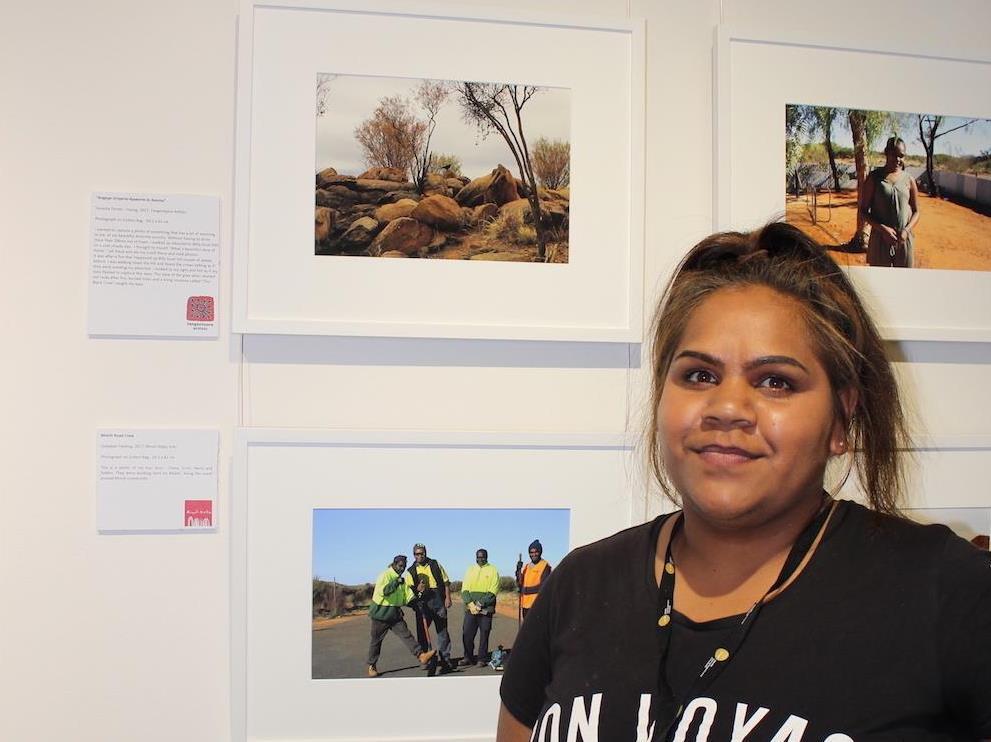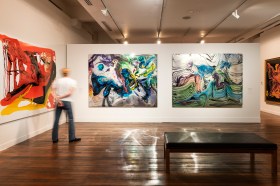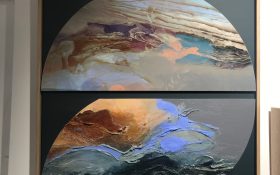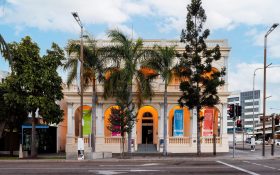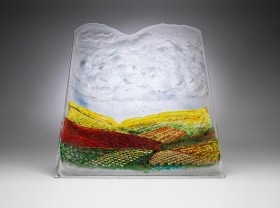Terazita Turner-Young at the Desart Artworker Photography Prize. Image supplied.
Remote art centres are community enterprises owned and managed by Aboriginal people. Because of their remoteness, these centres are united by peak bodies across Australia that deliver programs and facilitate opportunities to promote their work — sometimes resulting in national or even international exhibitions and conferences.
Desart, located in Alice Springs, is the peak body for the Aboriginal Art Centres of Central Australia. Their members represent approximately 8000 artists from 16 distinct languages groups spread across central Northern Territory, eastern Western Australia and northern South Australia – an area of over 1.221 million square kilometres.
Desart’s 41 member art centres achieved many significant local, national and international successes in 2017: Papunya Tula Artists had exhibitions at the Australian Embassy in Washington, the Florida International University as well as in Singapore; a major exhibition by Warakurna Artists, Tjarlirli Arts, Papulankutja Artists titled NGURRA: Home in the Ngaanyatjarra Lands was displayed at the South Australian Museum; and artist Eunice Napanangka Jack from Ikuntji Artists won the 2017 Moreton Bay Region Art Award.
In addition, celebrated artist Colleen Ngwarraye Morton from Artists of Ampilatwatja, won a gold medal in the painting division at the Florence Biennale in October and artists from the APY Art Centre Collective were finalists for the Archibald Prize, the Suliman Prize and the Wynne Prize at the Art Gallery of NSW.
But none of this would be possible without the support and hard work of art workers, which is why Desart started the Aboriginal Art Worker Program in 2008.
Supporting local art workers
The Desart Aboriginal Art Worker Program offers important support, professional development, mentorship, and training to Aboriginal art workers within Desart’s membership. These workers are the backbone of art centres and bring expert cultural knowledge, and in many cases, understanding of the local languages. These skills assist them in their work with artists, elders and managers.
‘In order for more local Aboriginal people to be actively involved in all facets of their art centres, we need to get things right for art workers now, so we can show young people their career and training pathway alongside strong community role models,’ said Joeanne Silverton, Desart Art Worker Program Educator.
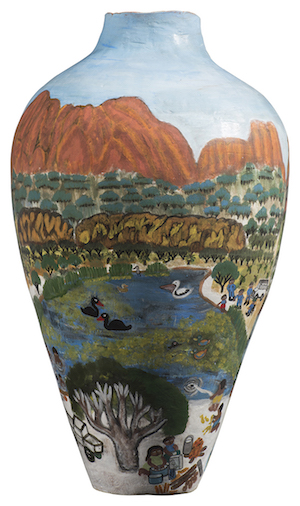
Beth Inkamala Mbitjana, Western Aranda, Hermannsburg, NT, Looking after our place, terracotta and underglaze, 34th Telstra NATSIAA.
Local art worker Beth Inkamala Mbitjana, who works at Hermannsburg Potters in Central Australia, said she enjoys working at the centre and is currently learning how to use the SAM (Stories Art Money) database to catalogue the pots by each of the artists. This important administrative work provides the provenance and story of the art work and is taught on-site.
Also an artist at the centre, Beth Inkamala Mbitjana was a finalist in the 34th Telstra NATSIAA earlier this year for her work Looking after our place.
‘[The art centre is] really important for the people here, for the local people who love doing painting and pots,’ she said.
As part of the Aboriginal Art Worker Program, Desart offers art workers accredited training, which is developed and delivered in partnership with Batchelor Institute of Indigenous Tertiary Education, as well as non-accredited training, including photography workshops, the arts Industry engagement program and the SAM database. The program also provides art workers with information about workplace rights.
The program is focused on increasing employment, developing career pathways and empowering art workers to connect with other across the different art centres, as well as with arts professionals and organisations in the wider industry.
‘Earlier in the year I went over to Adelaide for an arts Industry engagement program. We went to Adelaide to visit art galleries and university collections. It was an eye-opener to see where the art was going after it left our art centres,’ said Terazita Turner-Young, who works at Tangentyere Artists in Alice Springs.
‘With Desart, many of the other art workers come in from the other art centres, either in Alice Springs or elsewhere. It’s exciting to see other art workers as well to see what their experience is because most of the workers are based in the community, whereas with me I’m based in town so it’s different.’
To find out more about Desart’s programs and services and it’s member art centres, visit desart.com.au
